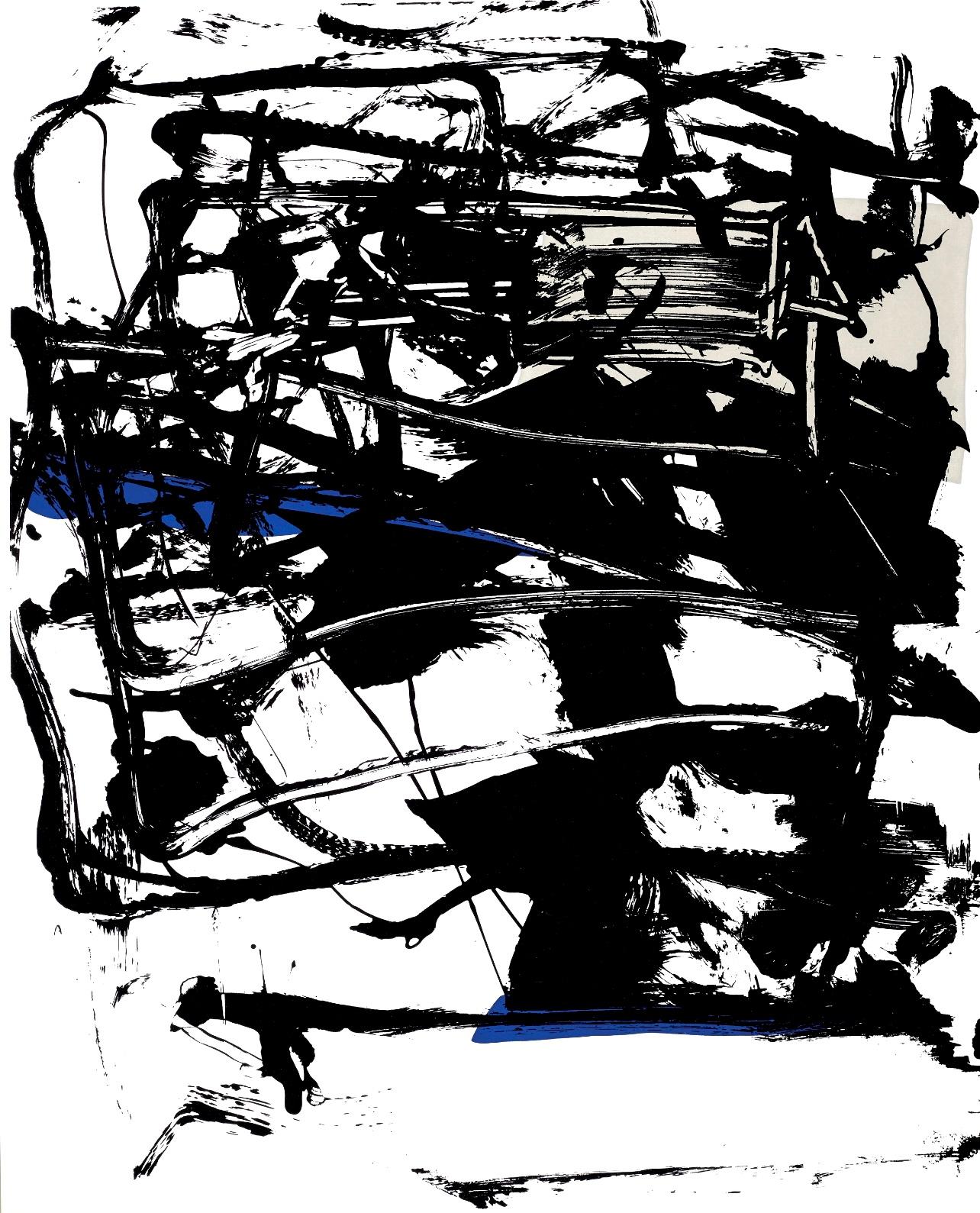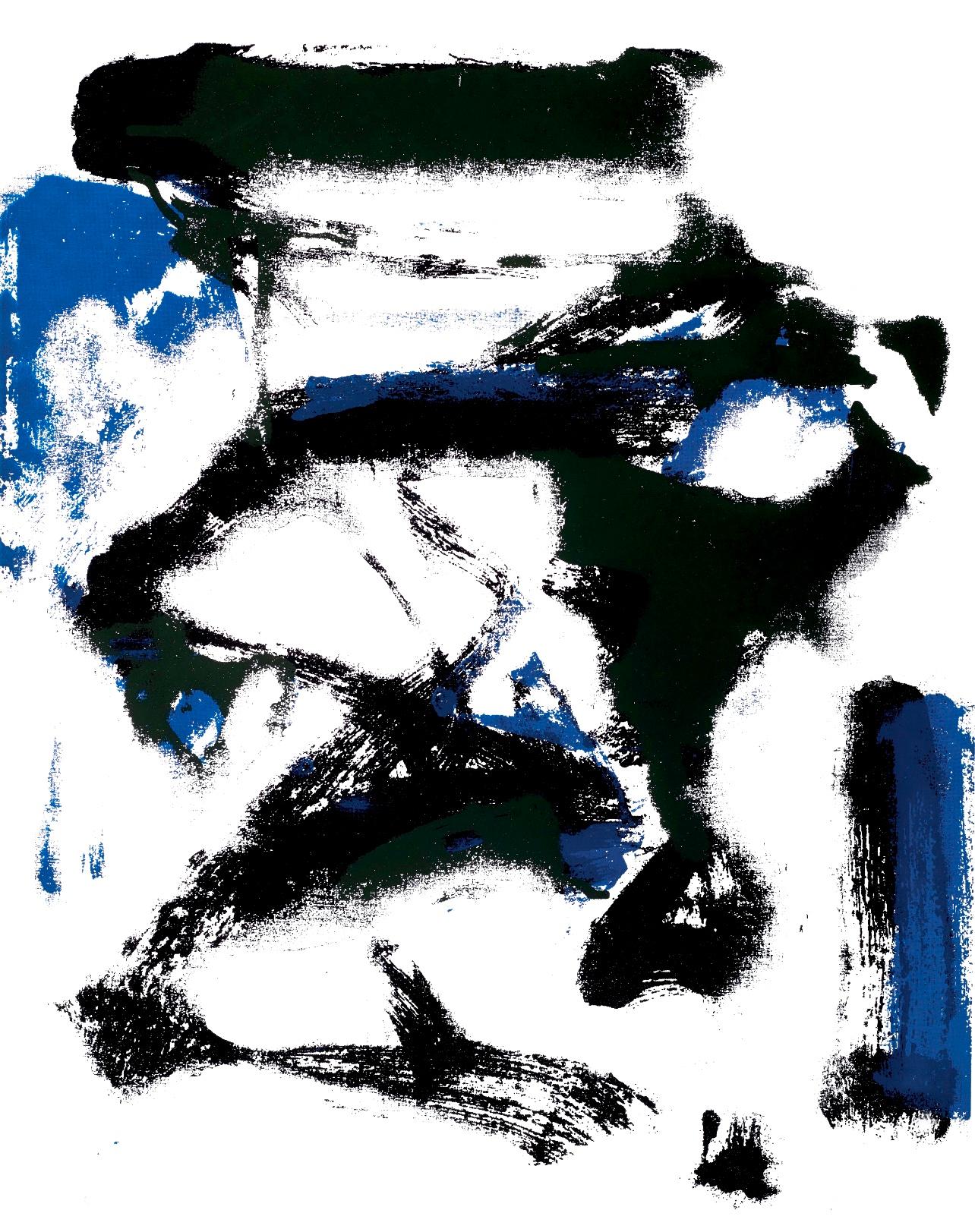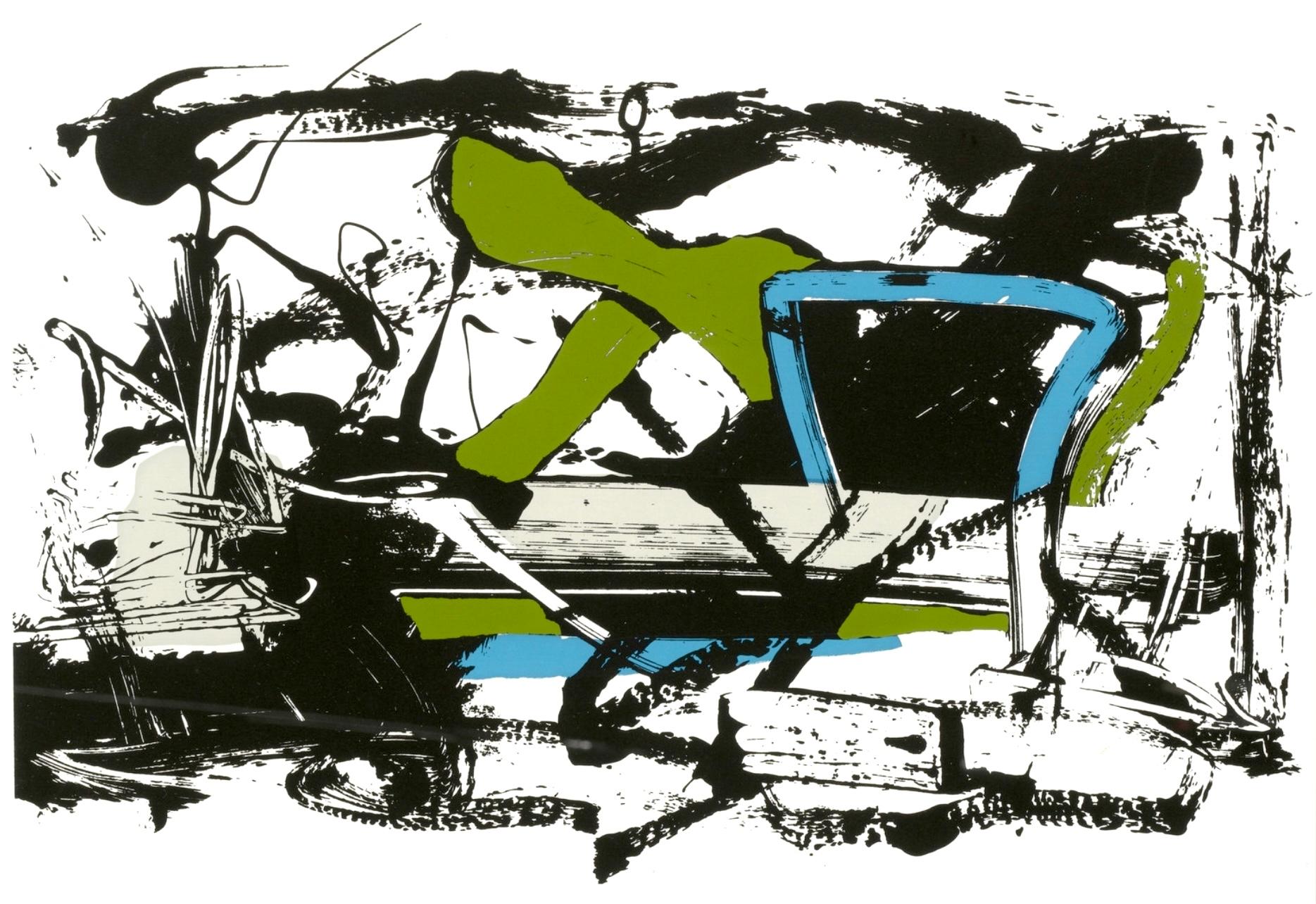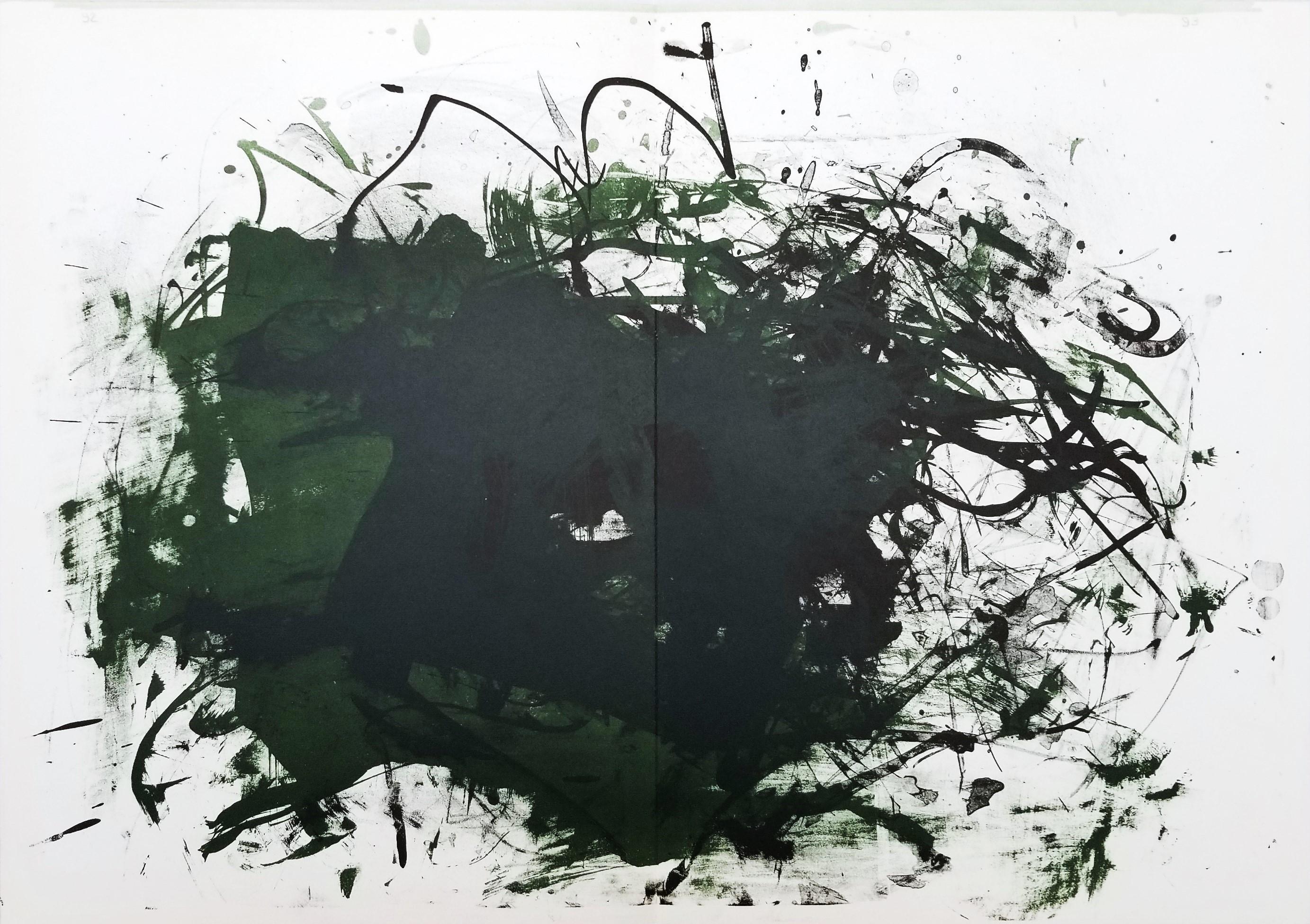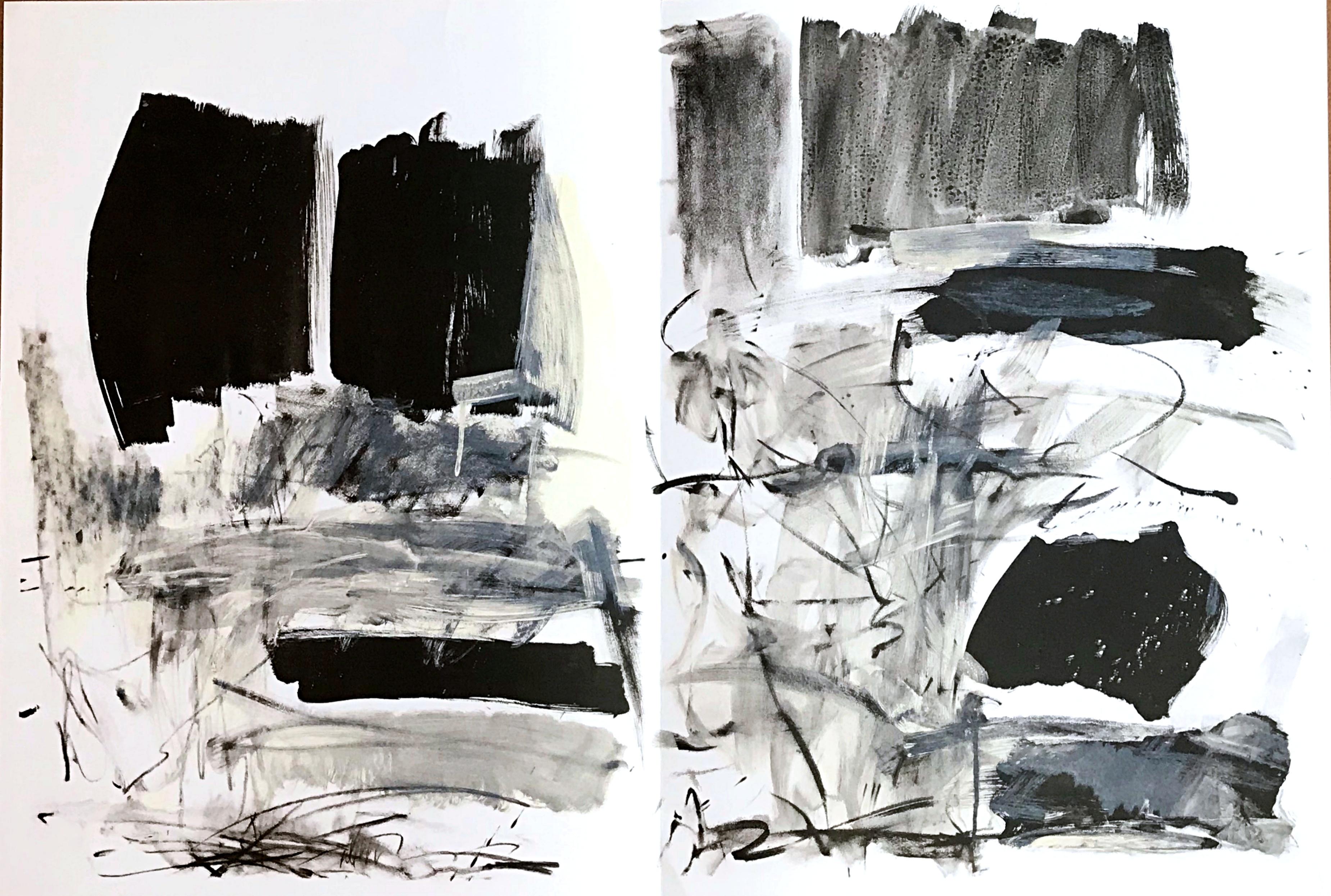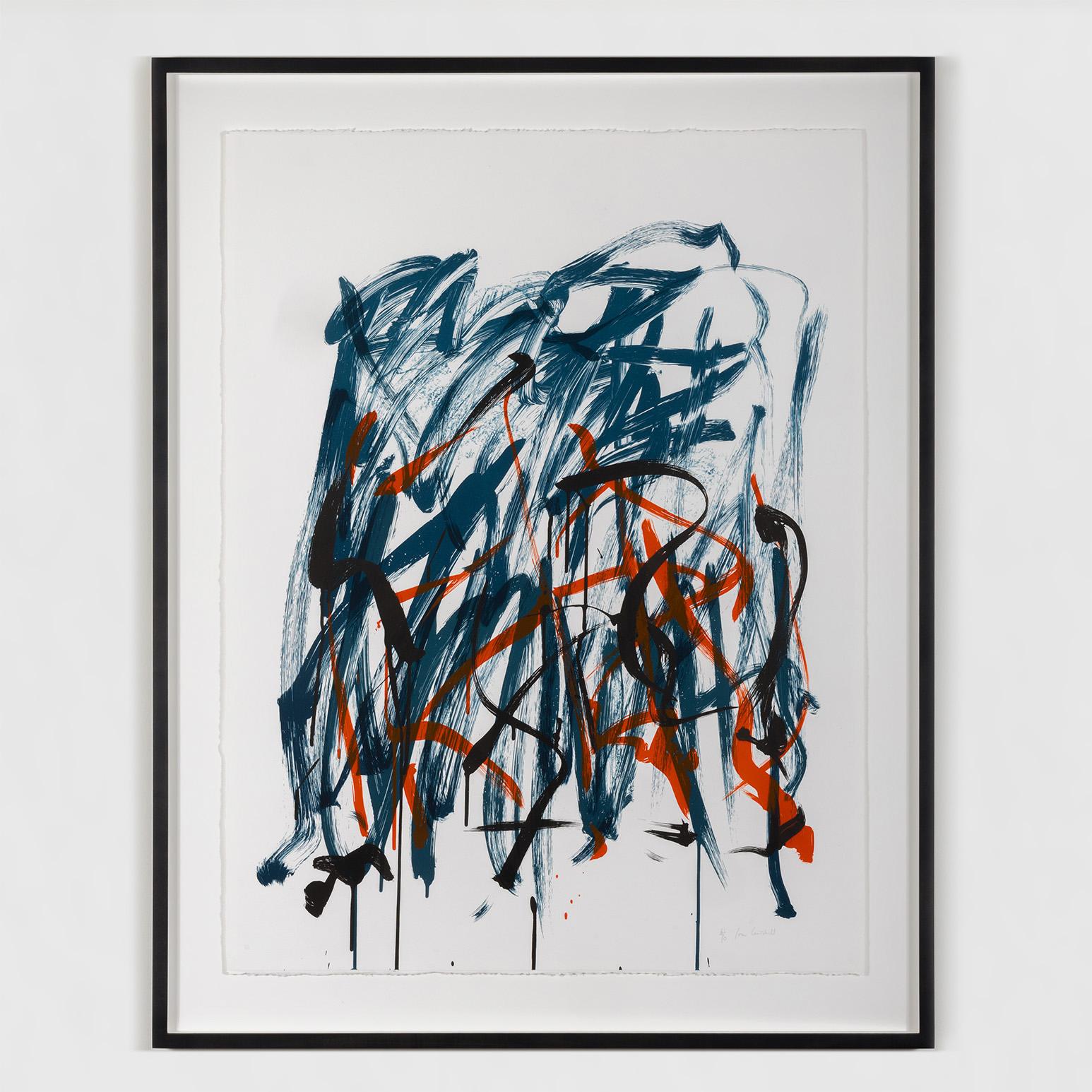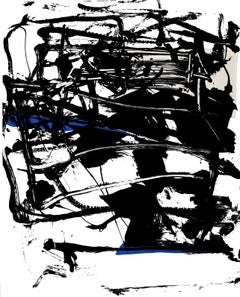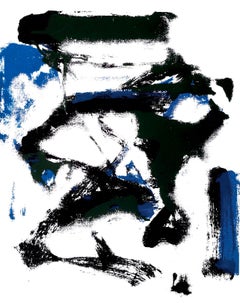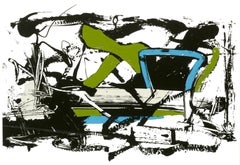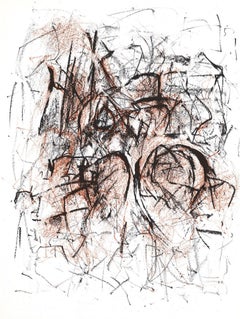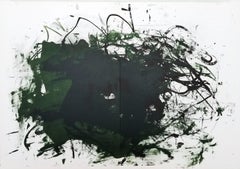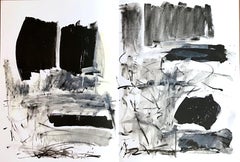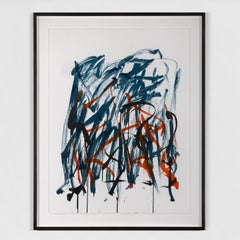This exquisite silkscreen by Joan Mitchell (1925–1992), titled Untitled, from the album The Poems, originates from the 1960 edition published and printed by Tiber Press, New York, under the supervision of Joan Mitchell, New York, Fall, 1960. Untitled exemplifies Mitchell’s mastery of gestural abstraction and her ability to translate poetic emotion into color and form, merging the spontaneous energy of Abstract Expressionism with the lyrical cadence of the written word.
Executed as a silkscreen on handmade velin Hahnemuhle paper, this work measures 17.62 x 14 inches. Unsigned and unnumbered as issued. The edition exemplifies the refined craftsmanship of Tiber Press, New York, and the collaborative spirit between visual artists and poets that defined one of the most innovative art publications of the 1960s.
Artwork Details:
Artist: Joan Mitchell (1925–1992)
Title: Untitled, from the album The Poems
Medium: Silkscreen on handmade velin Hahnemuhle paper
Dimensions: 17.62 x 14 inches (44.76 x 35.56 cm)
Inscription: Unsigned and unnumbered as issued
Date: 1960
Publisher: Tiber Press, New York
Printer: Tiber Press, New York
Condition: Well preserved, consistent with age and medium
Provenance: From the album The Poems, Tiber Press, New York, 1960
Notes:
Excerpted from the album, The edition of this album is limited to twenty-five reserved examples, I to XXV, and CC signed examples, I to CC. The paper was hand made by Hahnemuhle in Western Germany. The type is Walbaum-Antiqua, hand set and printed by Bruder Hartmann in West Berlin. The prints were made directly on the screens by the artist at Tiber Press in New York City, where they were printed in the fall of 1960. The albums were bound by Russell-Rutter in New York.
About the Publication:
The Poems (1960), published and printed by Tiber Press, New York, stands as one of the landmark collaborations between painters and poets of the postwar era. Conceived as part of Tiber Press’s celebrated series that paired leading artists of the New York School with prominent poets, the album united Joan Mitchell’s vivid visual compositions with texts by John Ashbery, creating a dynamic interplay between word and image. Printed under Mitchell’s direct supervision on handmade Hahnemuhle paper, each silkscreen was executed with the immediacy and expressive freedom that defined Abstract Expressionism, transforming the page into a field of color, gesture, and emotion. The album reflects Tiber Press’s pioneering commitment to merging fine art and literature in limited-format publications that brought the visual and poetic avant-garde into direct dialogue. Alongside Mitchell’s The Poems, the publisher released companion albums featuring works by Helen Frankenthaler, Grace Hartigan, and Michael Goldberg, collectively representing a turning point in American artist books and the rise of cross-disciplinary collaboration. Produced with meticulous craftsmanship in New York and West Berlin, The Poems endures as a testament to the synergy of mid-century art and poetry—a union of lyric and abstraction that captured the creative pulse of its generation.
About the Artist:
Joan Mitchell (1925–1992) was an American abstract expressionist painter whose powerful, emotionally charged canvases and luminous color harmonies established her as one of the foremost artists of the twentieth century. Born in Chicago, she studied at the School of the Art Institute of Chicago before moving to New York in the late 1940s, where she emerged as a rare woman in the inner circle of Abstract Expressionism alongside Willem de Kooning, Franz Kline, Jackson Pollock, and Helen Frankenthaler. Deeply influenced by Pablo Picasso, Alexander Calder, Alberto Giacometti, Salvador Dali, Joan Miro, Wassily Kandinsky, Marcel Duchamp, and Man Ray, Mitchell drew on their innovations in form, color, and conceptual freedom to forge a visual language of her own. From Picasso and Giacometti she inherited psychological intensity and expressive courage; from Kandinsky, an understanding of painting as a spiritual and musical act; from Calder, a dynamic sense of rhythm; and from Miro, Dali, Duchamp, and Man Ray, the poetic and surreal qualities of emotional truth. Mitchell’s monumental paintings—filled with gestural brushwork, radiant layers, and explosive movement—evoked remembered landscapes, fleeting sensations, and deep emotion, transforming abstraction into a medium of memory and feeling. After moving to France in 1959, she settled in Vetheuil, the village where Claude Monet once lived, finding inspiration in the surrounding light and nature that shaped her signature series such as La Grande Vallee, Noon, and Hemlock. Her works balanced chaos and structure, lyricism and force, creating visual symphonies that bridged the energy of Abstract Expressionism with the sensitivity of European colorism. Mitchell’s lifelong dialogue between emotion and landscape earned her international acclaim, and her art continues to inspire later generations of painters including Cecily Brown, Amy Sillman, Brice Marden, and Julie Mehretu. Her paintings are held in major collections worldwide, including the Museum of Modern Art, the Whitney Museum of American Art, the Art Institute of Chicago, the Centre Pompidou, and the Tate Modern. Through her synthesis of passion, intellect, and color, Mitchell redefined the possibilities of abstraction, linking the legacy of modern masters like Picasso, Calder, and Miro to the expressive freedom of contemporary art. The highest auction record for Joan Mitchell was achieved with Noon (1969), which sold for $29.2 million USD at Christie’s, New York, on May 12, 2021, confirming her place as one of the most influential and revered painters in modern art history.
Joan Mitchell Untitled The Poems Tiber Press New York 1960 silkscreen Abstract Expressionism Modernism.
